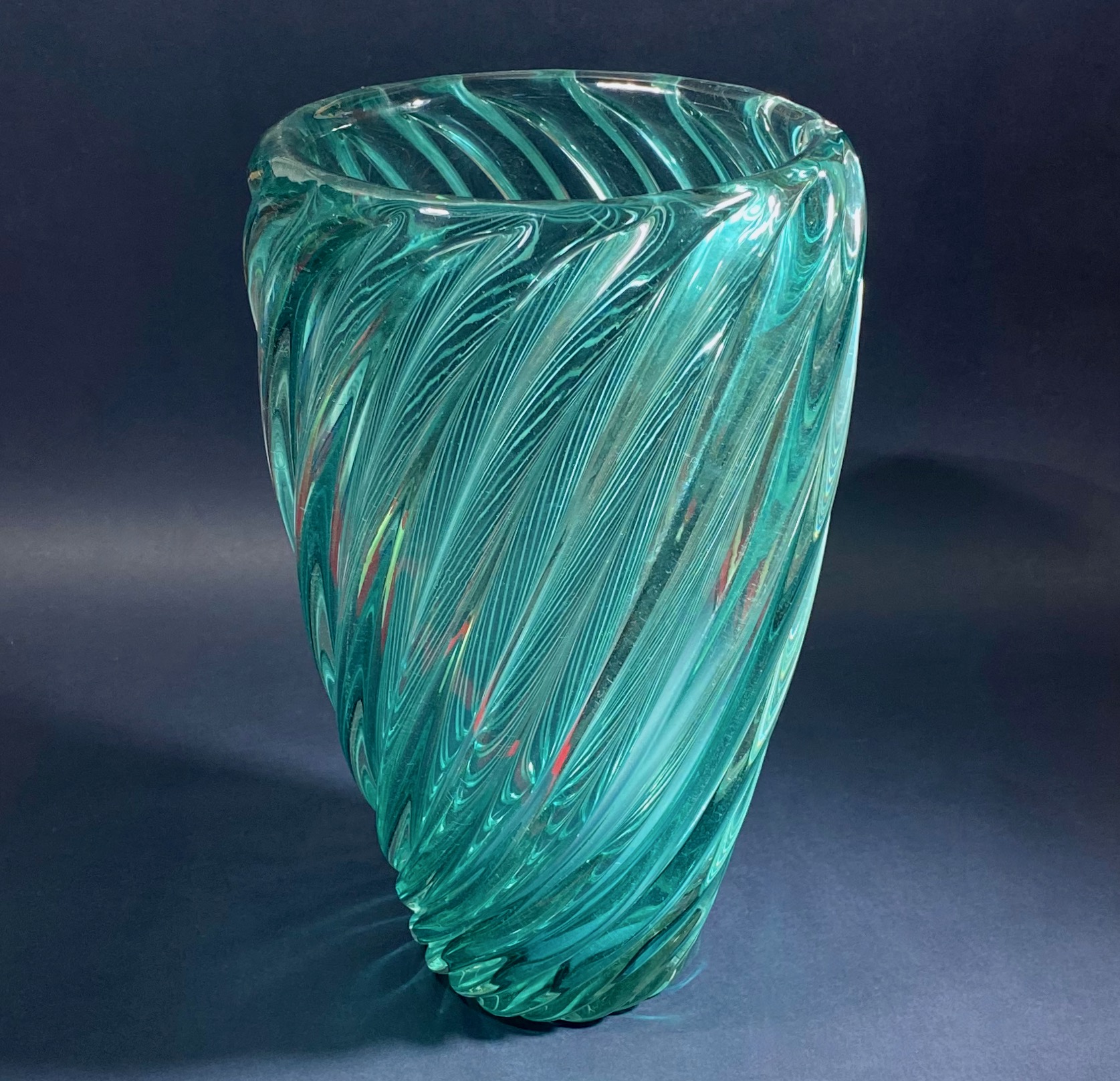

Title: Venetian Italian Vintage Hand Blown Glass Artist Carlo Scarpa
Shipping: $29.00
Artist: N/A
Period: 20th Century
History: Art
Origin: Southern Europe > Italy
Condition: N/A
Item Date: N/A
Item ID: 399
Highly collectible, rare opportunity / Vintage Venetian Italian Glass Artist Carlo Scarpa - Venini / ‘Mezza Diamante’ size 12 inches tall / Hand signed. Green Clear Spiraling Cane Sculptured Glass Vase. Dates from around the 1940s from the Venini Blvepages. Condition excellent / It is listed in 'Venini Catalog’ / Asking $4,500. This hand-blown green one-of-a-kind piece of twisted glass is ingeniously textured, colored, and shaped. This hand-blown piece of clear green glass forces you to think about how form and process achieve meaning on their own, without a clear-cut narrative, or a hushed relationship to, say, abstraction. A very similar vase smaller SOLD in blue, at wright auctions on 5 Jun 2019 for $5000 US. If this piece of rare green glass, came up for auction we predict it would sell for over $5000 easily. The Venini Company, 1932-1947,” Form, beauty, originality, and art for art’s sake. Scarpa's, glass sculptures were inspired by Chinese jade. Over 300 vessels that Carlo Scarpa (1906-78) designed for Venini, a leading Venetian glassmaker, in only 15 years, achieving a career’s worth of innovation and beauty before he turned full-time to architecture. While well known in art and design circles, Scarpa, who was born in Venice, is hardly a household name, even in Italy. The extent of his innovations in glass has only recently been reconfirmed by research in Venini archives long believed lost in a 1972 fire. Scarpa trained as an architect but refused to take the necessary exam to qualify for a license, which meant he always had to work with other architects. Nonetheless, he would become best known for brilliant renovations of some of Italy’s landmark buildings and museums, primarily in Venice and the Veneto, including the Gallerie dell’Accademia, and would be admired by Frank Lloyd Wright and Louis Kahn. Before Scarpa’s architecture, however, came his glass. When only 20, in 1926, he joined the staff of Cappellin, another Venetian glassmaker, and began to learn the chemical and physical properties of his medium and the delicate art of working with master craftsmen. After Cappellin went bankrupt in 1932, Scarpa was hired by Paolo Venini, who had left Cappelin to open his own glassworks (still in operation) on the island of Murano in 1925. Venini was already getting credit for bringing Venetian glassmaking into the 20th century, but now the process accelerated. From 1932 to 1940, to mounting praise, the Venini company introduced new series and techniques, almost all designed by Scarpa, at the Venice Biennale and the Milan Triennale. Scarpa’s superbly sculptural objects were ahead of their time. Most look as if they were made in the ’50s or even the ’60s. This is put in perspective in the show, which includes four Venetian glass bowls from the 1870s that Venini collected and that informed his and Scarpa’s work. (They are now in the Met’s collection.) Scarpa collaborated with Venini, and expanded on the ancient millefleur technique but used it in an original manner. Scarpa would go on to architecture in which glass, and light, played important roles. But his Venini years constitute a remarkable, almost self-contained burst of creativity, and devotion to objects of inspiring wholeness. Process, form, and decoration become a single thing. Art, craft, and science merge. Around this incredible glass artist.